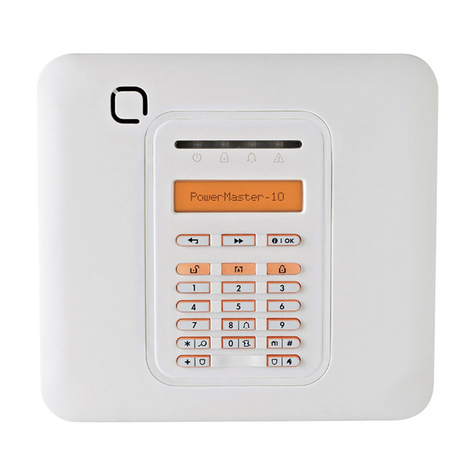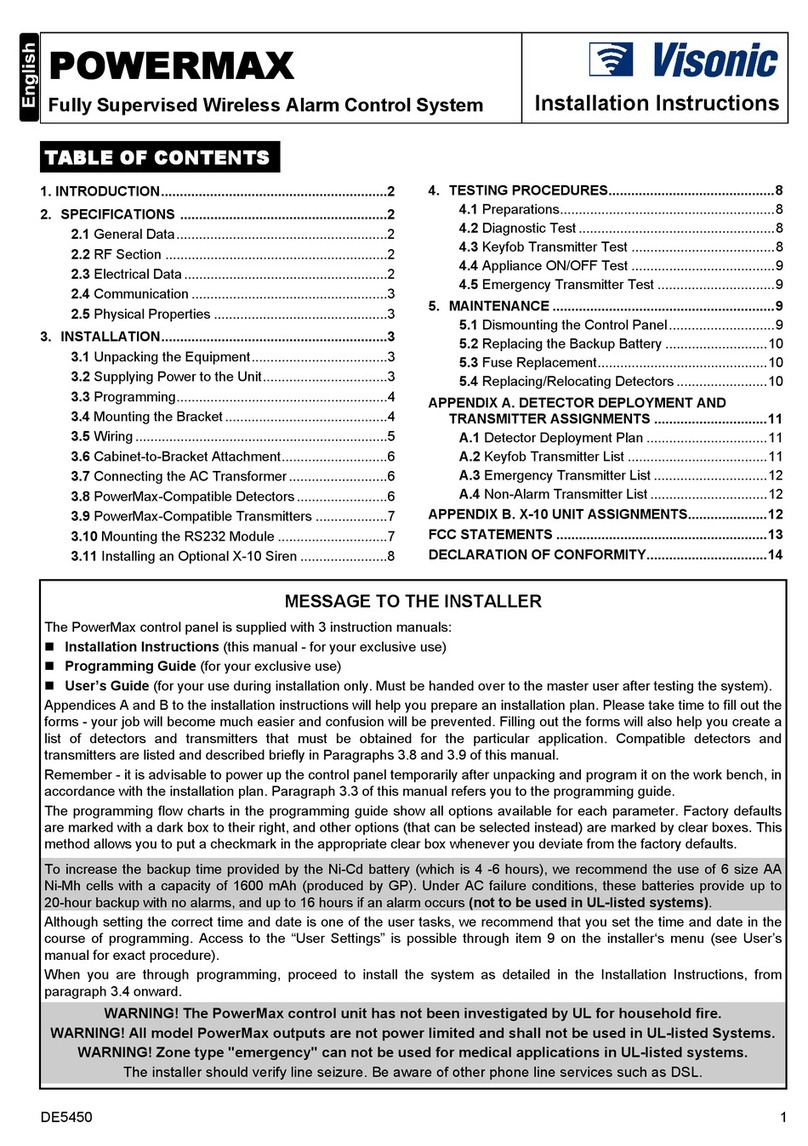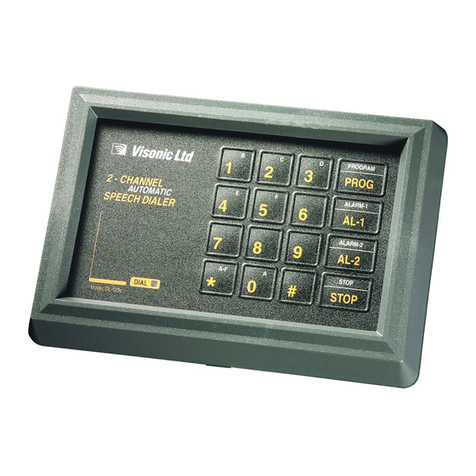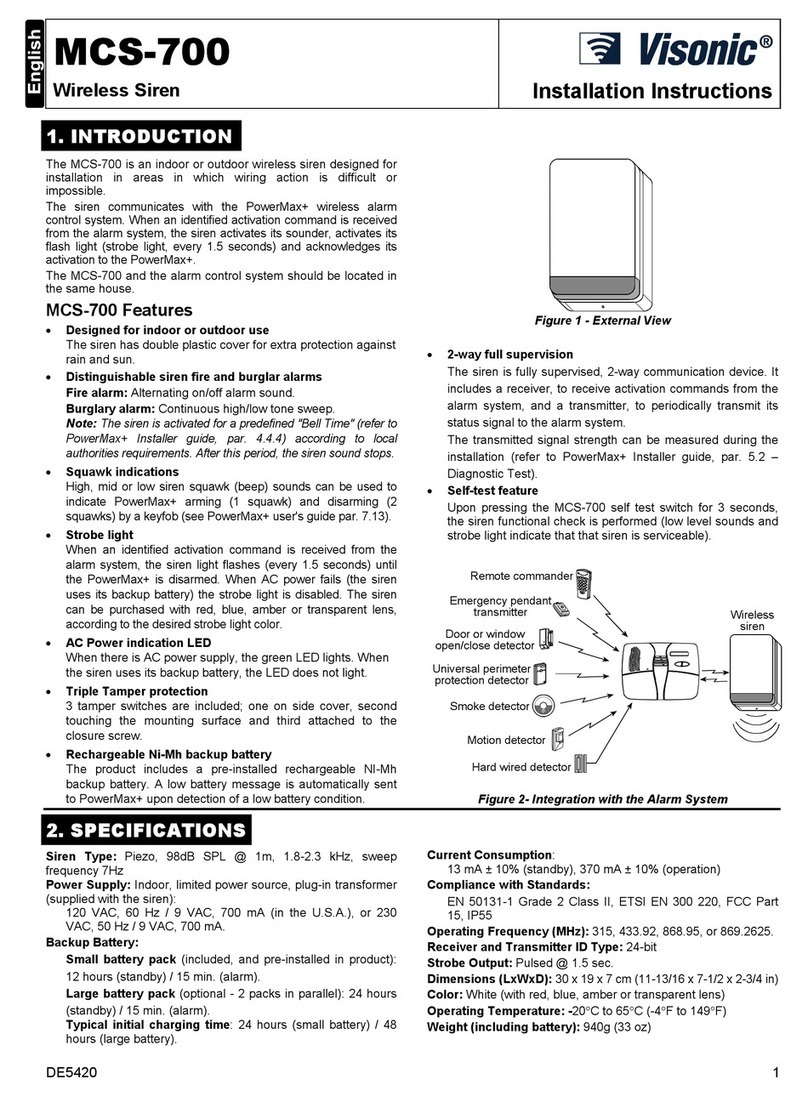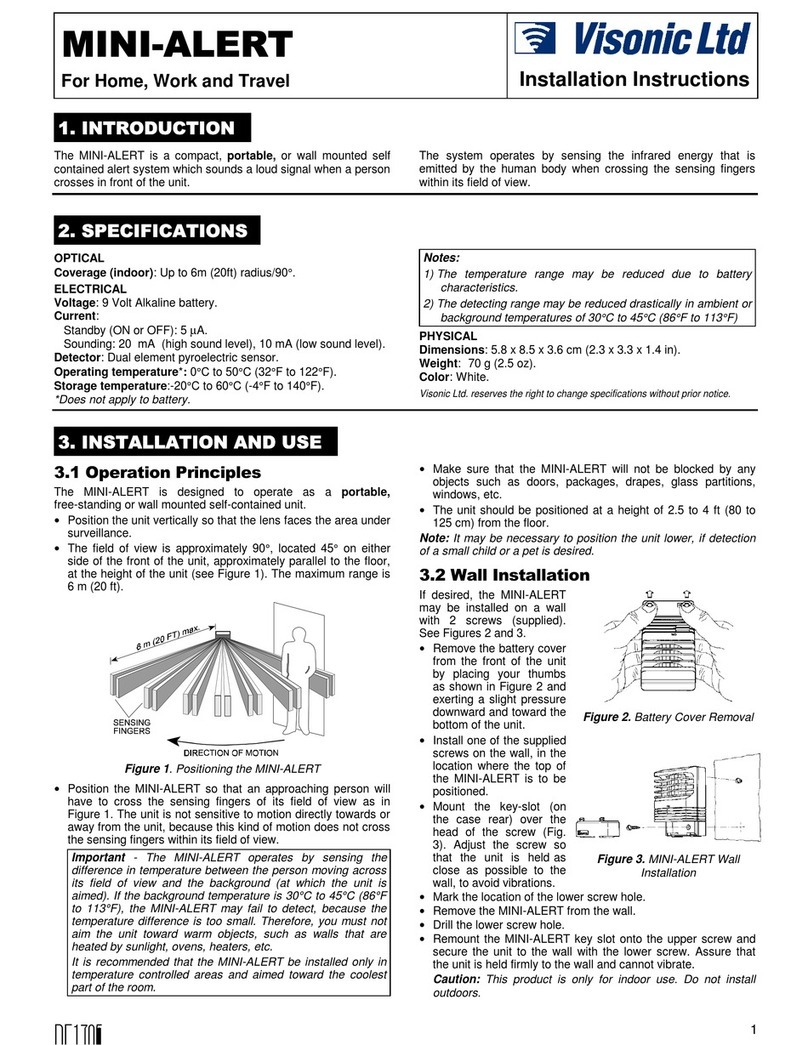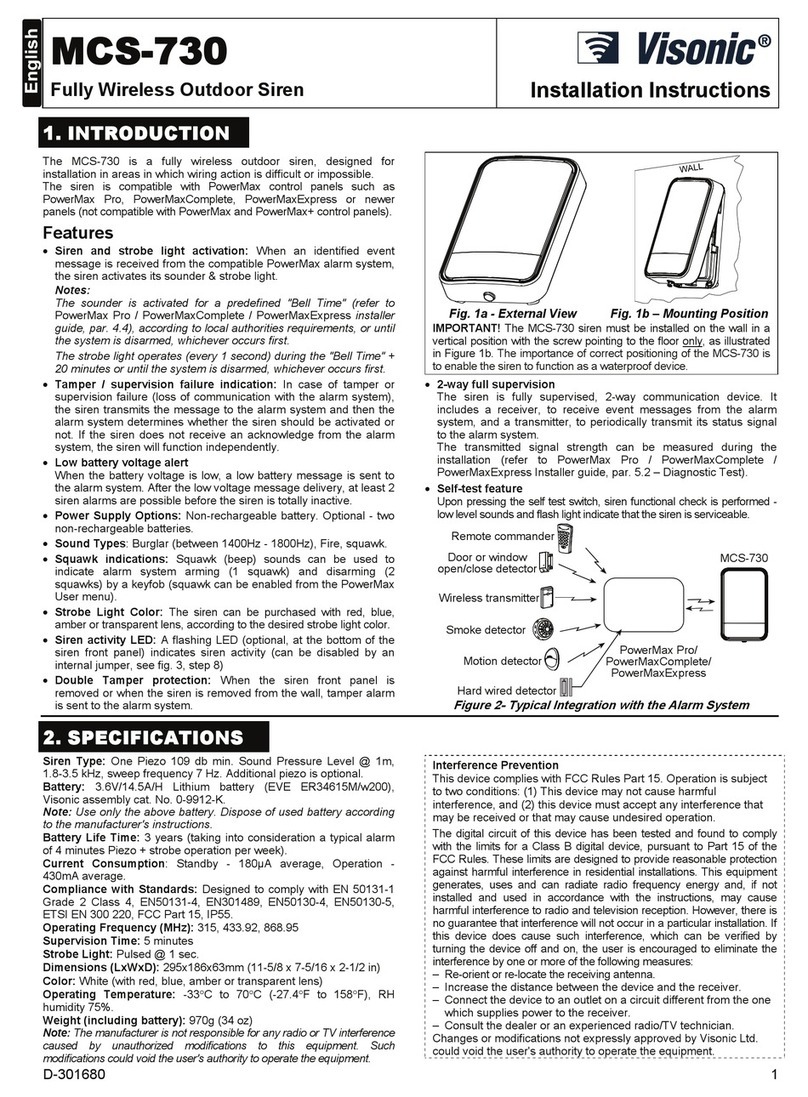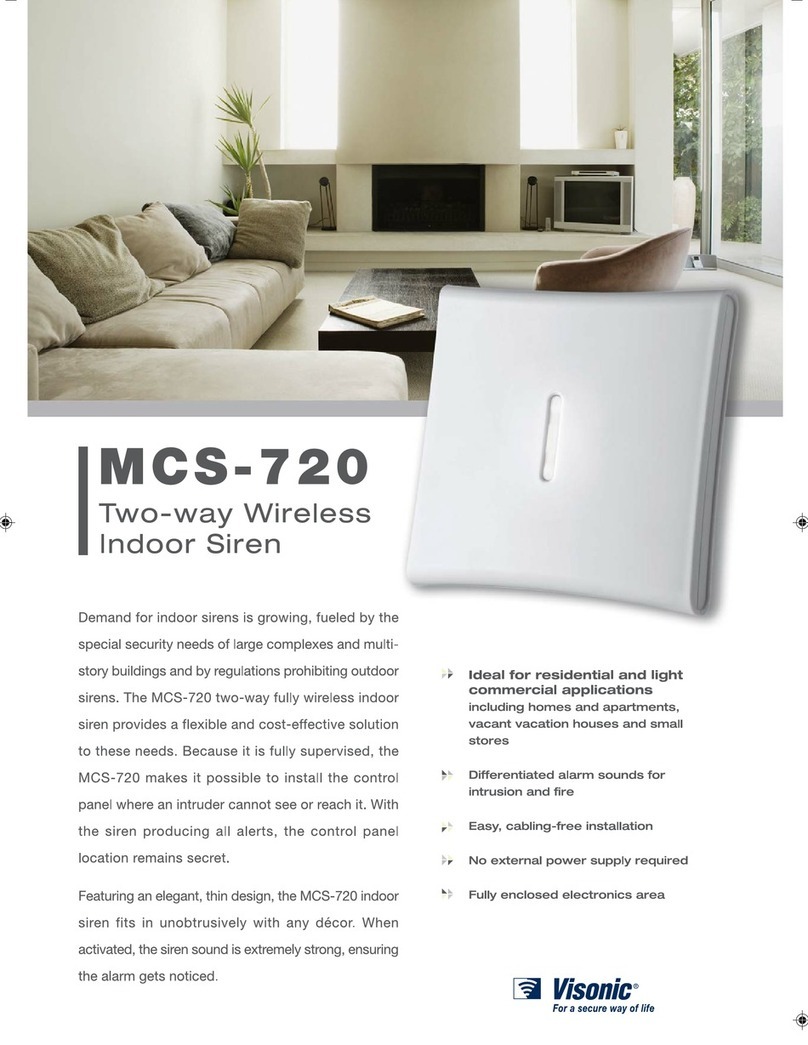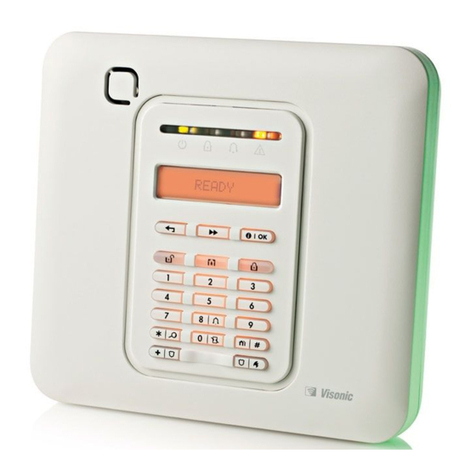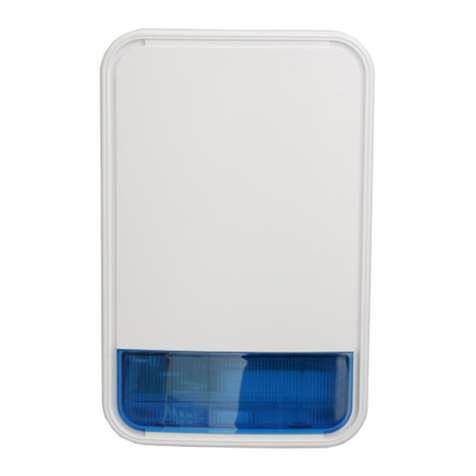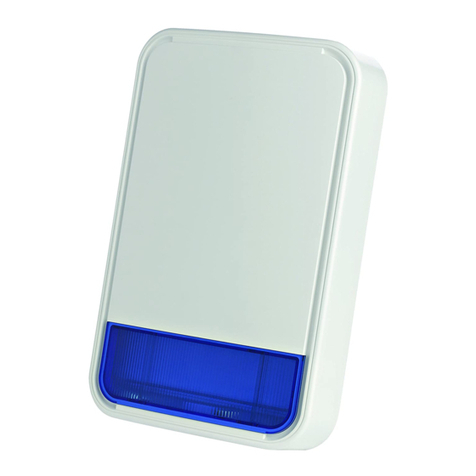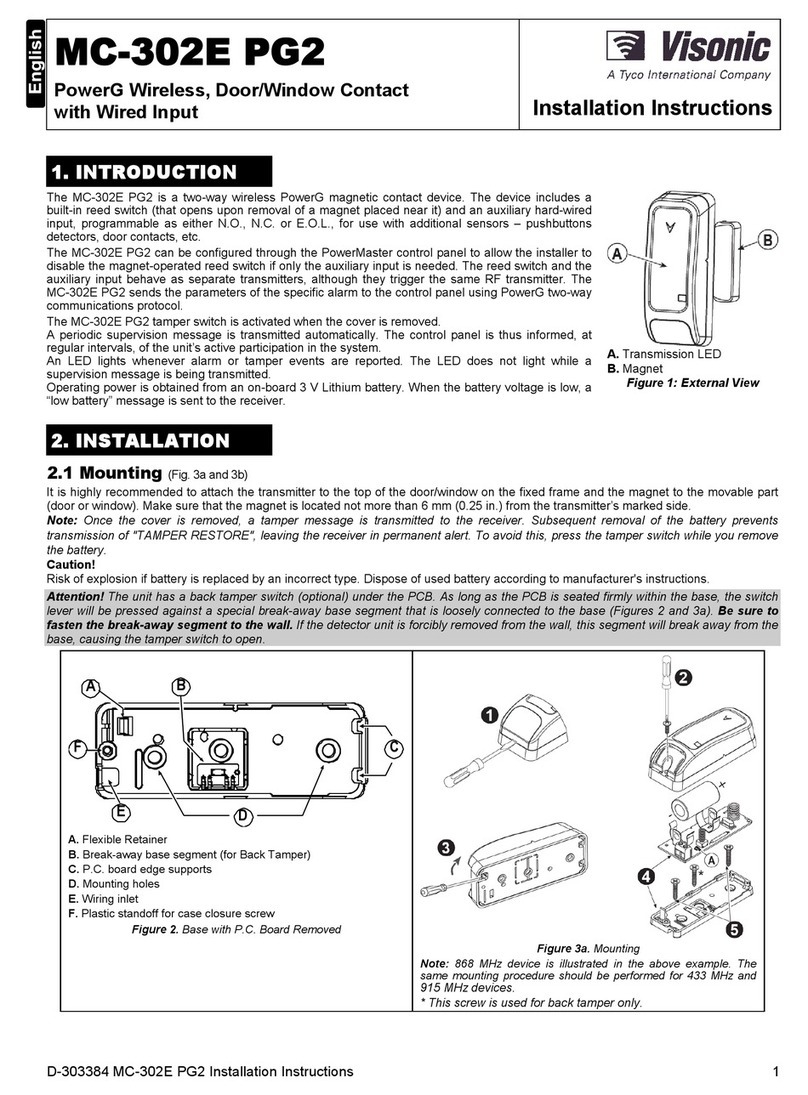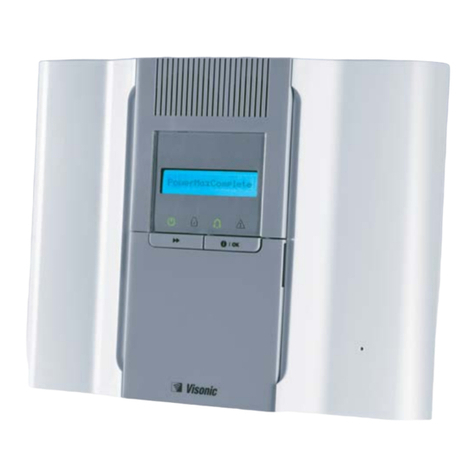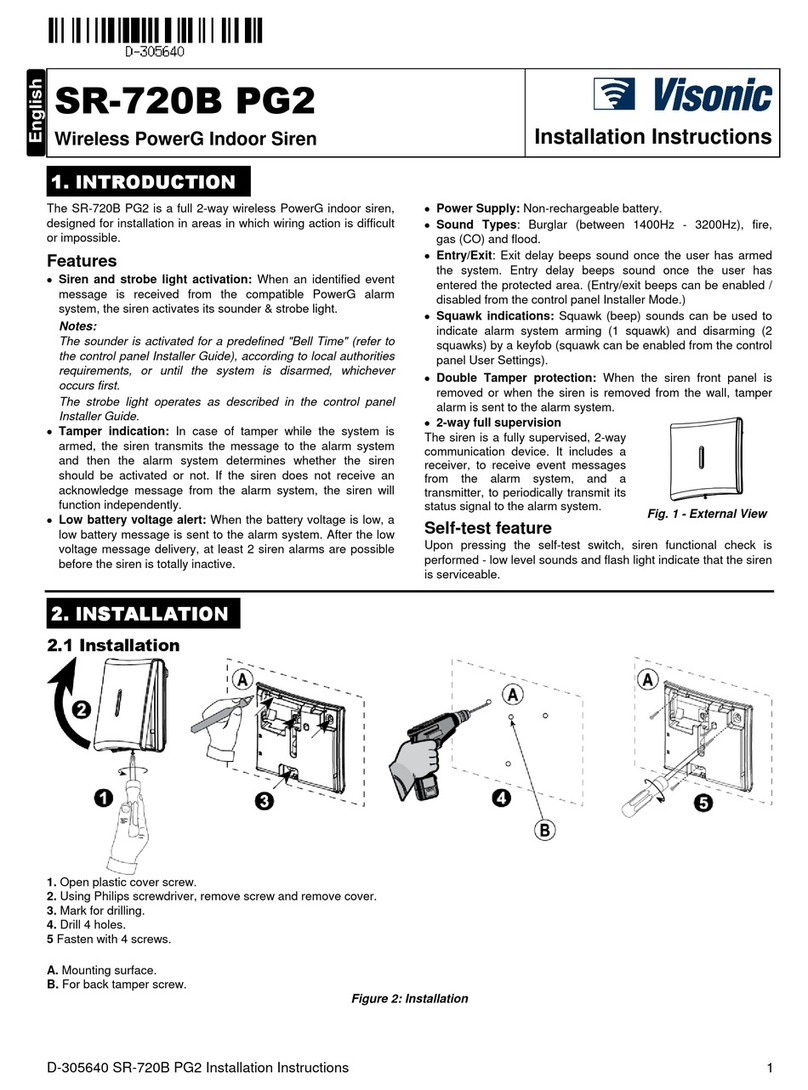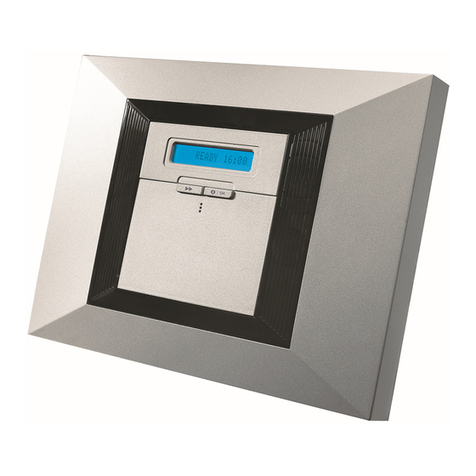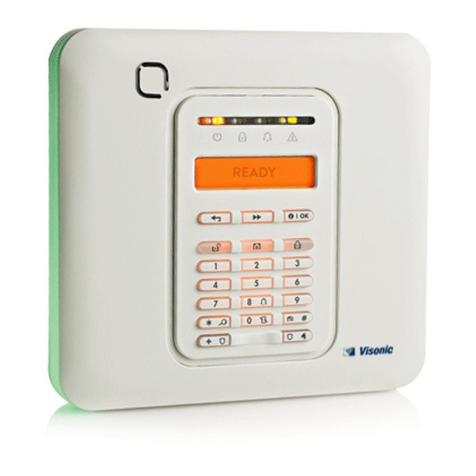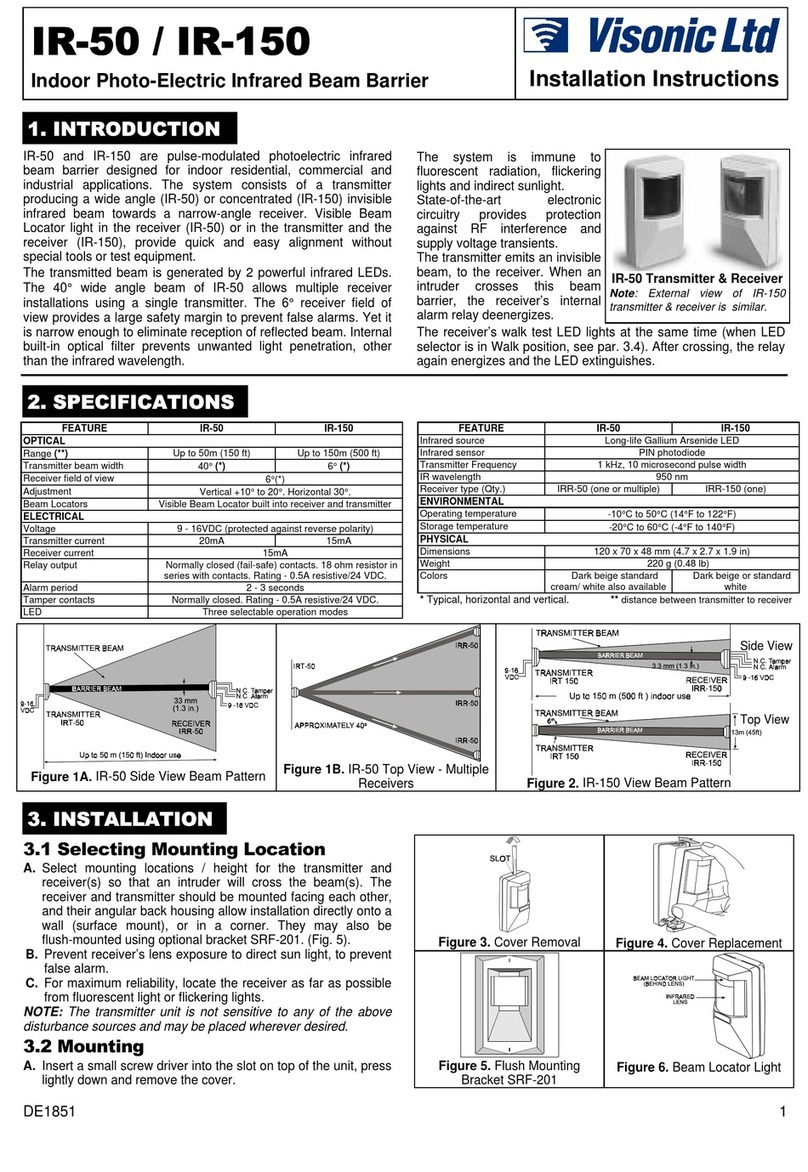Partitions The partitioning feature, when enabled,
divides your alarm system into distinct areas
each of which operates as an individual
alarm system. Partitioning can be used in
installations where shared security systems
are more practical, such as a home office or
warehouse building.
1. Enable partitioning:see KP-250 PG2
Installer’s Guide, section 3.13 Partitioning
2. Setup partition association for each
device: see KP-250 PG2 Installer’s Guide,
section 3.4.2 Adding New Wireless Devices
or Wired Sensors
To understand more about partitioning:
see KP-250 PG2 Installer’s Guide,
APPENDIX B. Working with Partitions.
Device configuration
templates The default parameters with which a new
device is enrolled into the system can be set
before you enroll devices. This default
template saves time on device configuration.
1. Define enrollment defaults for devices:
see KP-250 PG2 Installer’s Guide, section
3.4.7 Defining Configuration Defaults for
"Device Settings"
2. Enroll or pre-enroll devices: see KP-250
PG2 Installer’s Guide, section 3.4.2 Adding
New Wireless Devices or Wired Sensors
SirenNet – distributed
siren using Smoke
detectors
All PowerG smoke detectors are able to
function as sirens, alerting on any of 4 types of
alarm in the system: burglary, gas, fire or
flood.
Enable and configure SirenNet for each
smoke detector:refer to the SMD-426 PG2
/ SMD-427 PG2 Installation Instructions
Wired Siren outputs The control panel can operate a wired siren
and strobe devices Install and connect wired siren: see
section 3.8 Optional Expander Module
Wired zones and
programmable
outputs (PGM)
The control panel can support wired detectors
and control automation devices with
programmable wired outputs.
1. Connect a wired zone or PGM device: see
section 3.4 Adding a Wired Zone and Siren.
2. Program the wired zone: see KP-250
PG2 Installer’s Guide, section 3.4.2 Adding
New Wireless Devices or Wired Sensors
3. Program PGM outputs behavior: see
KP-250 PG2 Installer’s Guide, section 3.7
PGM Output.
Reporting to Private
Users and/or
Monitoring Station by
telephone, SMS and
IP communication
The PowerMaster-33 system can be
programmed to send notifications of alarm
and other events to 4 private telephone
subscribers by voice1and also to 4 SMS
cellular phone numbers and to report these
events to the Monitoring Station by SMS,
PSTN or IP communication.
To configure notifications to Private
phones:see KP-250 PG2 User’s Guide,
Chapter 6, section B.12 Programming
Private Phone and SMS Reporting
To configure reporting to the Monitoring
Station:see KP-250 PG2 Installer’s Guide,
section 3.6.4 Configuring Events Reporting
to Monitoring Stations
Quick installation with
link quality indication With PowerG devices, there is no need to
consult the KP-250 PG2 keypad when
mounting a wireless device, because
PowerG devices include a built-in link quality
indicator. Choosing the mounting location is
a quick and easy process.
To choose the ideal location to mount a
wireless device, see Chapter 2 Choosing the
Installation Location.
1Supported in specific PowerMaster-33 G2 variants (for further details, please contact your Visonic representative).
4 D-306917 PowerMaster-33 G2 Installer's Guide
